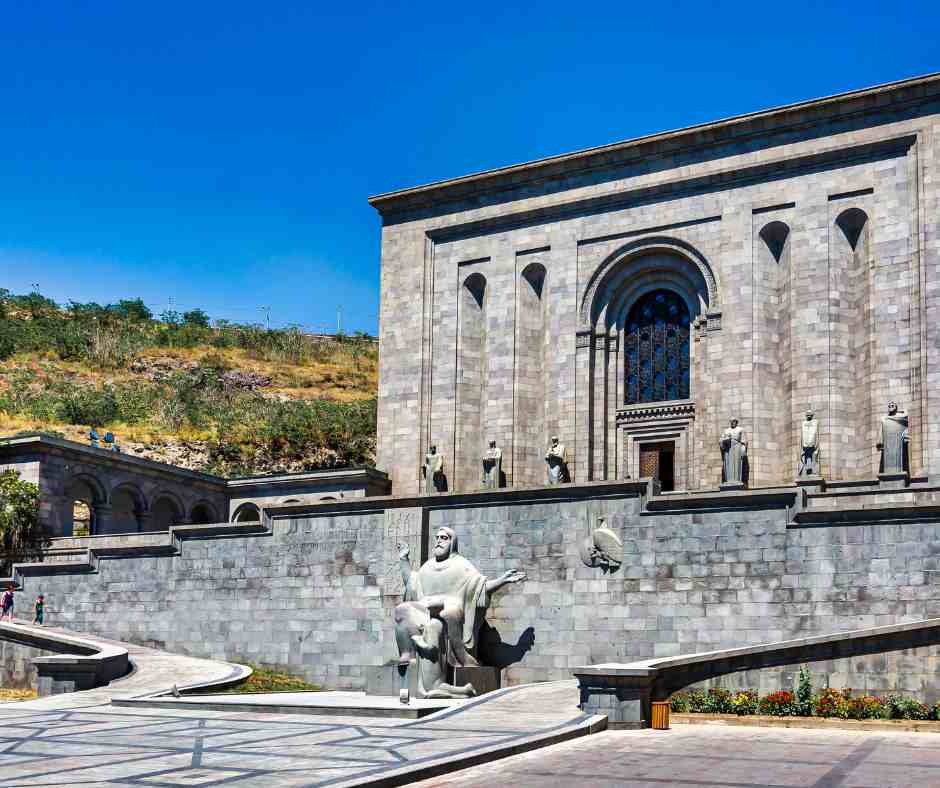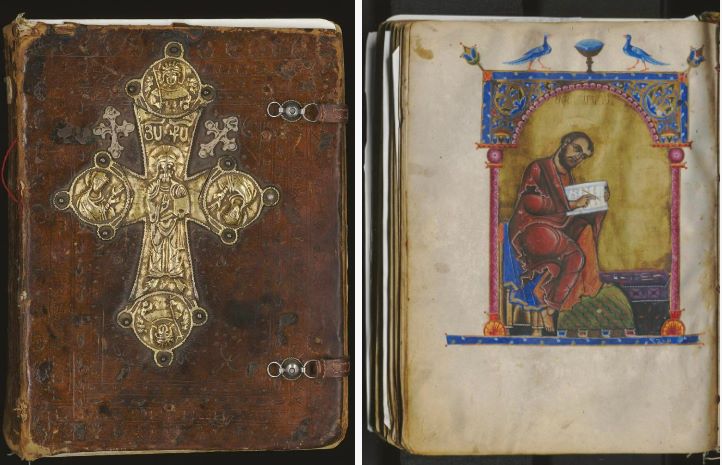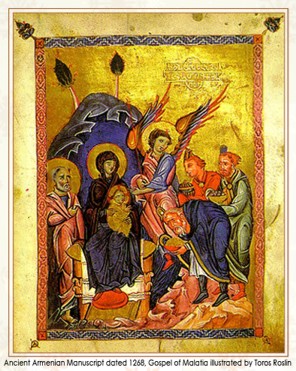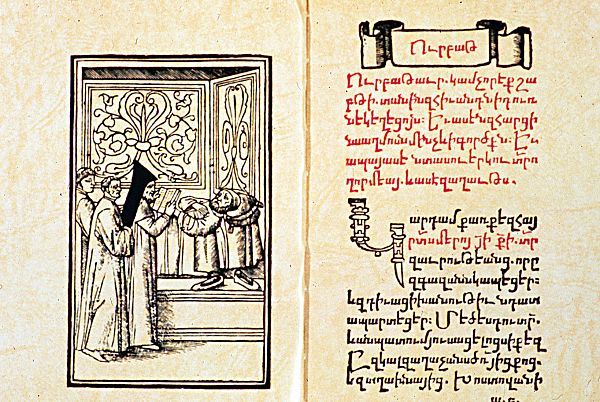In every country, there are museums that stand apart for their exceptional cultural and historical significance. In Armenia, the Matenadaran is undoubtedly one of those places.
As one of the most unique museums in the region, it holds a special place for history enthusiasts and anyone seeking to explore Armenia’s rich heritage.
Located in the heart of Yerevan, Matenadaran houses one of the world’s largest collections of ancient manuscripts. The collection shows centuries of Armenian, Persian, Greek, Arabic, Latin, and other texts. This repository is a must-see destination in Armenia for any tourist passionate about history, literature, or ancient art.
Matenadaran Building

The Matenadaran building is in the heart of Yerevan, on a slope at the end of Mashtots Avenue. If you stand in the middle of the avenue, it will be seen with the Mother Armenia statue above it, which is quite symbolic. Construction of the building began in 1945 and concluded in 1957. Renowned architect Mark Grigoryan is behind this impressive structure, built from bluish-gray basalt,
Outside the building, statues of Mesrop Mashtots, the creator of the Armenian alphabet, and his disciple Koryun. Behind them are the 36 letters of the Armenian alphabet carved into the stone. The facade also features statues of prominent figures from Armenian medieval science and culture. Two of them are manuscript illuminator Toros Roslin and prominent Armenian historian Movses Khorenatsi.
In addition to a repository for medieval manuscripts, the Matenadaran also functions as a museum and research institute.
History of Matenadaran
The medieval Armenian monasteries like Haghpat or Tatev had manuscript repositories. Meanwhile, Matenadaran is actually based on the manuscript collection of the Armenian Catholicosate in Etchmiadzin. This collection has been carefully preserved and expanded over time. It followed the Catholicosate as it moved between different locations. In 1441, it was re-established in Etchmiadzin, Armenia, becoming the core of what would later be known as the Matenadaran.
By the early 20th century, the collection had grown significantly, but during World War I, concerns for its safety led to its temporary relocation to Moscow. It was returned to Armenia in 1922. However, at the beginning of the last century, many Armenian manuscripts were lost due to the Armenian Genocide. Despite these tragedies, efforts were made to save and expand the collection.
Matenadaran Collection of Armenian Manuscripts

Matenadaran’s collection is one of the most significant in the world. The repository now houses over 20,000 ancient manuscripts and scrolls. These manuscripts cover a wide range of subjects, including history, philosophy, science, law, medicine, and literature. Written in Armenian and other languages like Greek, Arabic, Persian, Latin, Hebrew, and Georgian, the collection presents the cultural history of Armenia and the region.
Many of the manuscripts have been preserved thanks to Armenian translations made during the Middle Ages. The translators helped save valuable works that no longer exist in their original languages. Matenadaran also holds over 500,000 historical documents, including decrees and various papers related to Armenian studies. Of course, there are also samples of ancient Armenian miniatures and writing.
Since its establishment in 1959, Matenadaran has grown steadily. Manuscripts have been donated by individuals and institutions worldwide, enriching the collection with unique pieces. Most manuscripts are from the collection of Etchmiadzin, but some were donated by individuals like Harutiun Hazarian or Rafael Markossian.
Unique Pieces in Matenadaran

The Matenadaran houses several remarkable manuscripts. Among the oldest and most significant is the Lazarian Gospel, dating back to 887, which remains one of the institution’s oldest complete volumes.
Another treasure is the Etchmiadzin Gospel from 989, notable for its 6th-century Byzantine ivory cover. The Matenadaran also proudly holds the Mughni Gospel, an 11th-century masterpiece.
The Vehamor Gospel, from the 7th century, is the oldest complete Armenian manuscript in existence. It was donated by Catholicos Vazgen I in 1975, in memory of his mother. This Gospel plays a ceremonial role today, as Armenian presidents take their oath upon it.
Several illuminated manuscripts by renowned Armenian artists Toros Roslin and Sargis Pitsak, created in the 13th and 14th centuries respectively, are highlights of the collection. Their detailed miniatures and vibrant colors are gems of the Armenian medieval art. The Zeytun Gospel, a creation of Toros Roslin in 1256, survived through turbulent times and remains one of the finest examples of Armenian medieval art.

In addition to manuscripts, the Matenadaran holds a copy of Urbatagirk, the first Armenian printed book (1512), and Azdarar, the first Armenian magazine (1794-1796).
It also preserves the first Armenian-printed map, made in Amsterdam in 1695, as well as manuscripts with beautiful bindings, some decorated with silver and semi-precious stones.
The smallest manuscript is a 1436 church calendar weighing just 19 grams. Another famous piece is Msho Charentir (Homilies of Mush) which weighs 28 kilos.
What Other Unique Museums to Visit in Yerevan?
In addition to Matenadaran, there are some spectacular museums in Yerevan. One must-visit is the History Museum of Armenia. The latter houses an exclusive collection of over 400,000 artifacts, showing the country’s past from ancient times to the present. The oldest pieces are from the Paleolithic period.
For art lovers, the National Gallery of Armenia has an impressive collection of works, including both Armenian and international pieces.
If you want an unusual museum pick the Sergei Parajanov Museum. It is dedicated to the life and work of the visionary Armenian filmmaker and artist famous for his avant-garde style. Parajanov’s museum is filled with his eclectic art, collages, and personal items, giving visitors a glimpse into his creative genius.
